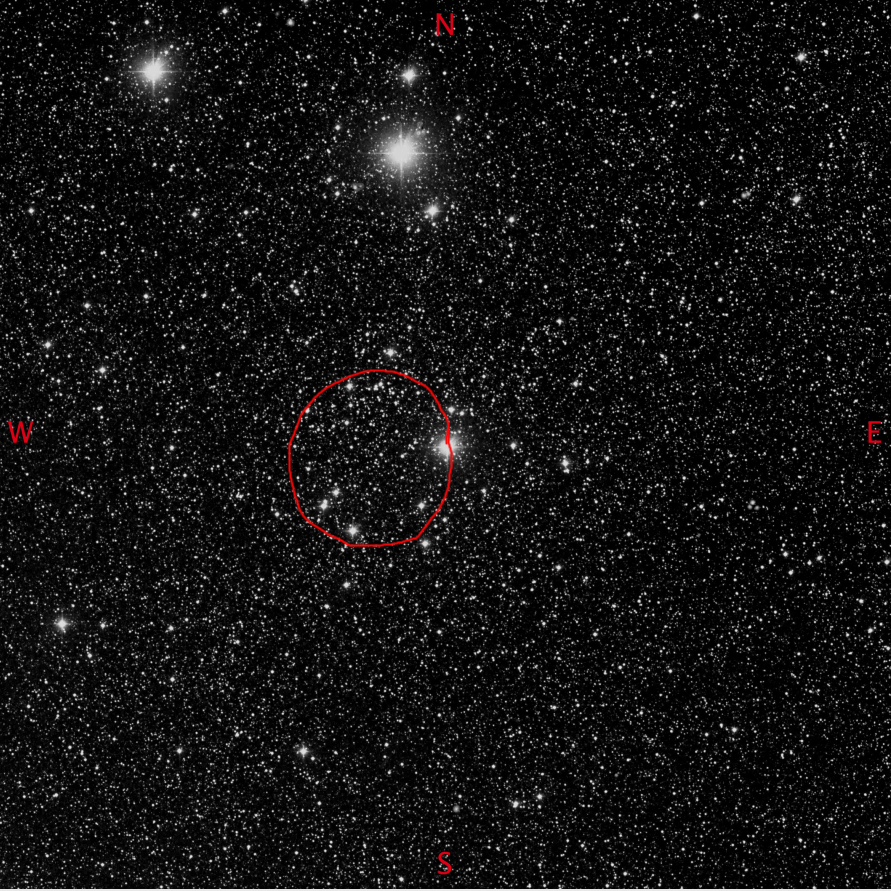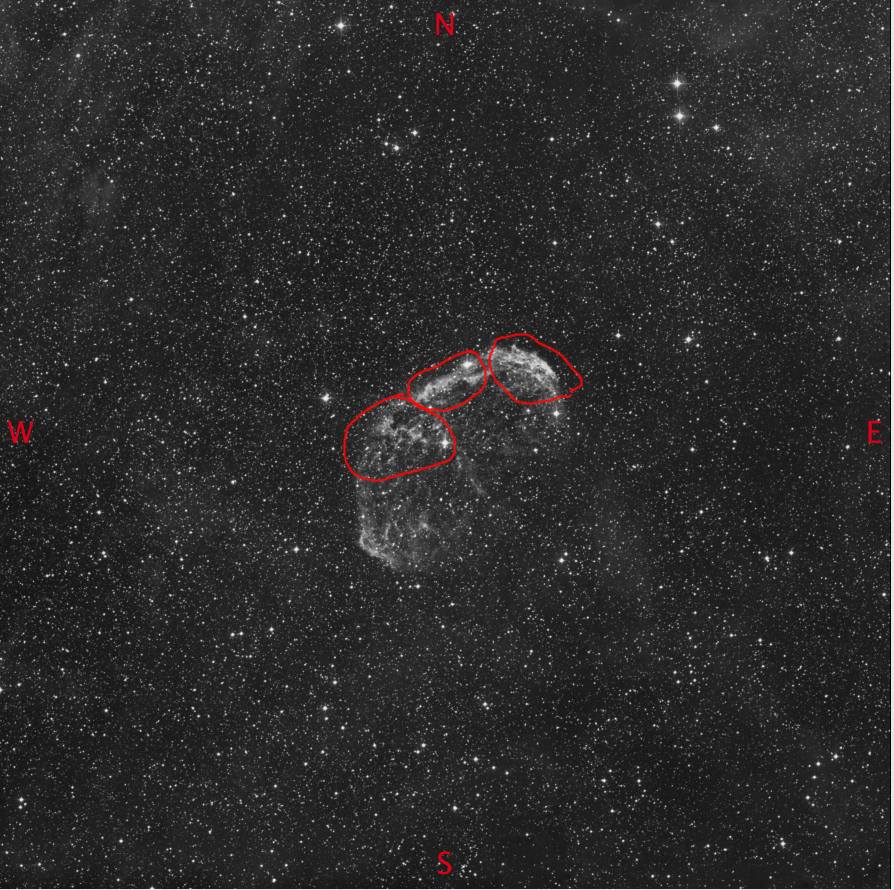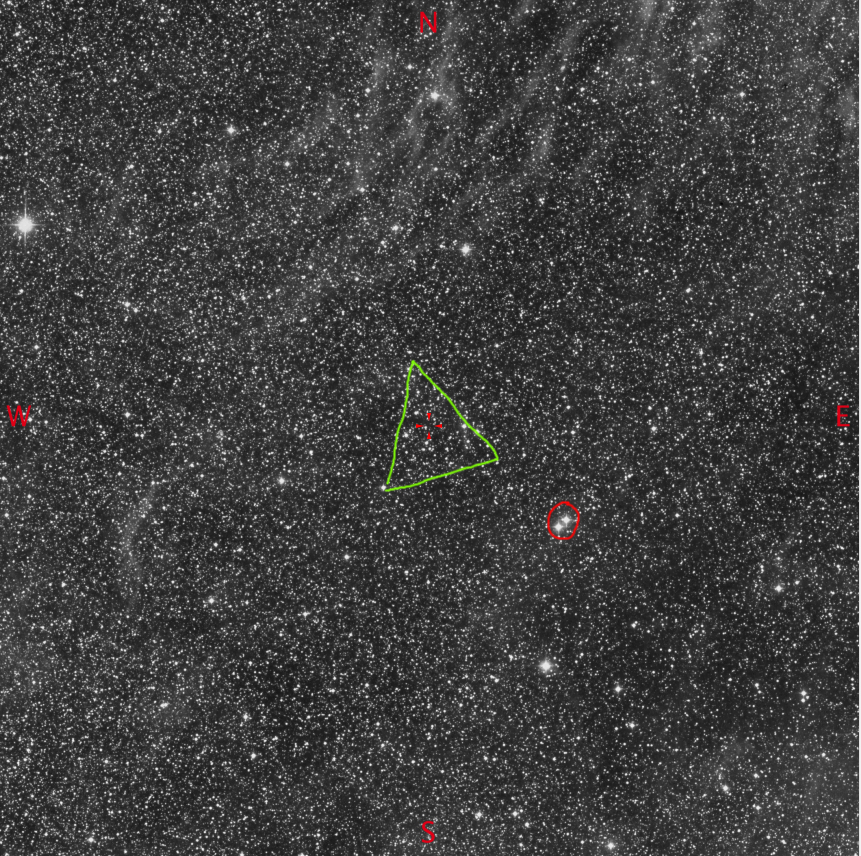Managed to stay awake enough to open up and make some progress on my Caldwell Catalogue observations.
With all the confusion of the existence/location of NGC 6882, I wanted to have another go at observing NGC6885 and satisfy myself as to what is the most obvious cluster with my observing setup.
Session Data
- Date: 23/07/2014 Time: 22:39 – 00:51 UT
- Seeing: I Perfectly Stable,
- Transparency: Clear.
- Air Pressure: 1017mb,
- Temp: 16C,
- Humidity 98%,
- Wind Speed: 2mph
Caldwell 37: NGC6885, Collinder417

After having read up on NGC6885 and the mystery of NGC6882, I decided to give this object another go.
In the Altair Astro 250mm, Plossl 40mm, 51 X, 52′, West is to the 11 O’Clock.
Astroplanner says NGC6885 has a diameter of 7.0 arc sec and is centered around the star 20 Vul. However, through the eyepiece, there is no clustering of stars that is centered around 20 Vul. However, it’s obvious to me that there is a clustering of Stars located in a circle 10.0 arc min in diameter to the N/W with the circumference at the S/E, passing through 20 Vul ( marked in red on the image) . The positioning of Collinder 416 matches this view. Skytools 3 locates Collinder 416 correctly and has it as a diameter of 8.0 arc sec.
The positioning of NGC6882 is identical to Collinder 416!
Caldwell 27: NGC6888

Unfortunately I wiped my voice log for this, so observation is written up from memory. I’ve tried to observe this object two times previously and never detected any of the nebulosity associated with this nebula. This time I fitted my OIII filter to the diagonal of the TMB and bingo! While nebulosity was faint, overall contrast was greatly improved.
In the TMB 80 f/6, Plossl 26mm, 18 X, 2.8°, Oxygen III Nebula Filter, West is to the 11 O’Clock.
The brightest star in the area bound by the Nebula is SAO 69597 to the North. The clustering of nebulosity seemed to be in three groups. ( marked in red on the image) One was certainly centered around SAO 69597 with the other two off to the West of this. This nebulosity was visible with direct vision, but really popped when averted vision was used.
Basel 6
Not sure about this one. Looking through both the Altair Astro 250mm, Plossl 40mm, 51 X, 52′, or the TMB 80 f/6, Plossl 26mm, 18 X, 2.8°, didn’t show anything distinctive standing out from the background star field. Not found.
However to the S/E are a couple of bright stars next to each other. Just to the N/W of these, is a triangular shape cluster of stars that is NGC 6874.
NGC6874

I noticed this while hunting for Basel 6 – which I could not identify in amongst the background star field.
In the Altair Astro 250mm, Plossl 40mm, 51 X, 52′, this object fits between the two 8.0 mag stars ( SAO 69487 and SAO 69487 marked red in the image) to the S/E and Basel 6 to the N/W.
The most striking thing about this object is it’s shape, which looks like a left pointing equilateral triangle (marked green in the image) pointing to the S/W and occupies a 9 arc min space. The number of stars is difficult to estimate, but they appear to be made up of 11.0 and 12.0 mag stars packed in such a way that makes the group stand out from the background.
The shape is even more striking in the TMB 80 f/6, Plossl 26mm, 18 X, 2.8°. Really Nice